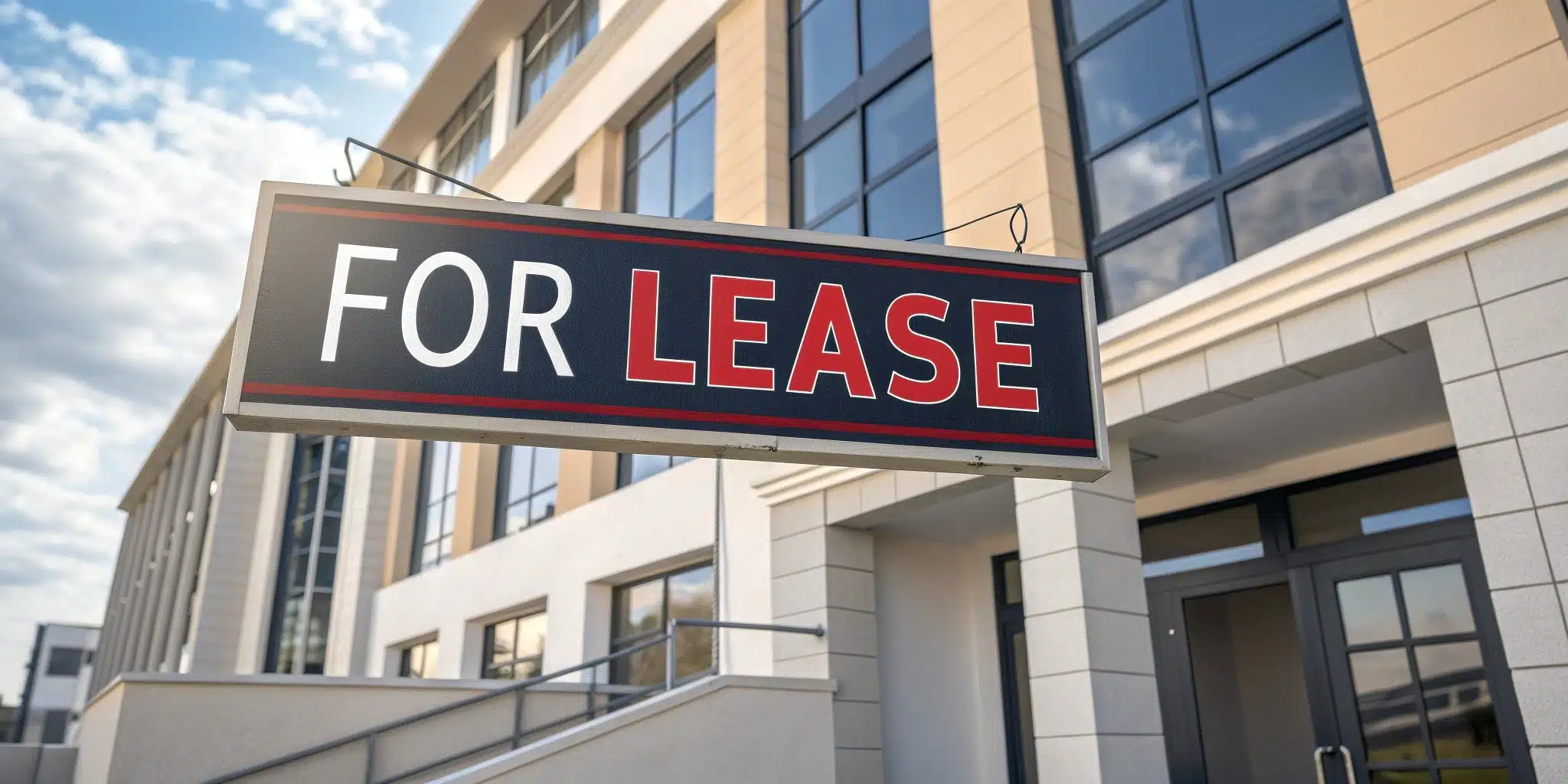
Here’s the misconception: Facility Management and tenant retention live in separate worlds. One’s about keeping buildings running, the other’s about keeping people happy.
Wrong. They’re two sides of the same coin. Well-run buildings drive satisfaction, lower churn, and give tenants fewer reasons to leave.
A facility management firm found that 60% of tenants leave due to poor customer service and communication—issues that sit squarely in FM’s wheelhouse. In commercial buildings, tenant departures drain an average of $31,927 from the property’s net operating income (NOI), making retention one of the most critical financial levers property owners have. Recent data shows turnover costs average $3,872 per unit, and that’s before you factor in lost rent during vacancy periods.
The connection is clear: good facility management drives tenant satisfaction, and tenant satisfaction drives renewals. As Dean Stanberry, SFP, CFM, Past-Chair of IFMA’s Global Board of Directors, puts it: “AI is not just about automation; it’s about empowering facility managers to make smarter, faster, and more informed decisions. Integrating AI into our workflows unlocks new efficiency, sustainability, and tenant satisfaction levels while transforming buildings into truly intelligent environments.“
The average resident retention rate in the United States in 2023 was 56%, with rates above 60% considered good and rates closer to 70% or higher deemed ideal. That gap between average and ideal? That’s where FM makes the difference.
10 Ways FM Boosts Tenant Retention
Vacancy rates climbing? Tenant complaints piling up? Let’s cut to the chase.
1. Fix Things Before They Break
Reactive maintenance is expensive and annoying. Tenants notice when the elevator goes out every other month. Set up a preventive maintenance schedule that actually prevents problems. Use your CMMS to track equipment lifecycles and get ahead of failures. Nothing says “we care” like an HVAC system that works all summer.
Preventive maintenance isn’t just a nice-to-have—it’s a proven cost saver and performance booster. Studies show it can reduce total maintenance costs by 12–18%, cut downtime by as much as 50%, and deliver a 400% ROI by avoiding costly emergency repairs. Instead of paying overtime and rush fees when something breaks, regular tune-ups extend equipment life, improve energy efficiency, and keep tenants comfortable.
With modern tools like IoT sensors, predictive analytics, and cloud-based CMMS platforms, facility teams can stay ahead of failures and turn maintenance from a budget drain into a competitive advantage.
Read more at Preventive Maintenance: A Cost-Saving Strategy for Facilities
2. Make the Air Worth Breathing
Indoor Environmental Quality (IEQ) isn’t just a buzzword—it’s what keeps people healthy and productive. Monitor CO2, particulates, humidity, and temperature. Invest in proper filtration. Tenants who aren’t getting headaches at 2 PM are tenants who renew their leases.
Improving air quality goes beyond just installing a filter—it means tackling multiple threats like airborne pathogens, odors, and particulates with the right technology for your space. Advanced systems don’t just capture contaminants; they destroy them, reducing recontamination risks and lowering maintenance costs. Sizing your system properly and verifying real-world performance ensures energy efficiency without wasting budget.
Clean air improves tenant satisfaction, boosts productivity, and protects property value—making air quality upgrades one of the smartest investments a building owner can make.
Read more at How To Fix Your Building’s Air Problem
3. Respond Fast, Fix It Right
Speed matters, but so does quality. A tenant puts in a work order at 9 AM, they want acknowledgement by 10 AM and resolution by end of day (if reasonable). Track your response times, celebrate improvements, and hold your team accountable. Word spreads fast when maintenance is reliable.
4. Create Spaces People Want to Use
That lobby hasn’t been updated since 2005? Those common areas look like a doctor’s waiting room? Time to refresh. Work with property management to create gathering spaces, add greenery, and improve lighting. Make tenants proud to bring clients through your doors.
Read more at Space Design and Facility Management
5. Embrace Technology (The Useful Kind)
Sensors can tell you which conference rooms sit empty, which parking spots go unused, which restrooms need attention. Use that data to optimize space and services. Let tenants submit work orders via app. Give them visibility into building operations. Transparency builds trust.
6. Keep It Clean—Really Clean
There’s clean, and there’s actually clean. High-touch surfaces matter more than ever. Visible cleanliness in lobbies, restrooms, and common areas sets the tone. Your janitorial contract is not the place to cut corners. Prospective tenants decide in the first five minutes of a tour.
7. Think Green, Save Green
Energy efficiency cuts operating costs AND appeals to tenants with ESG commitments. LED lighting, smart HVAC controls, low-flow fixtures—these aren’t optional anymore. Market your sustainability efforts. Tenants want to partner with buildings that share their values.
Energy efficiency cuts operating costs and attracts ESG-minded tenants. Smart lighting, automated HVAC, and efficient systems aren’t just upgrades—they’re table stakes. When you showcase real sustainability efforts, you’re not just saving money—you’re making your building more desirable to tenants who want partners that share their values.
Read more at Energy-efficient Strategies for Facilities
8. Build Community, Not Just Buildings
Host tenant appreciation events. Create a building directory. Facilitate connections between complementary businesses. FM can coordinate these efforts with property management. A building with community is a building with staying power.
9. Communicate Proactively
Don’t wait for complaints—get ahead of them. Send structured monthly updates that include project timelines, completed work, upcoming maintenance, and any building changes that could impact daily operations.
For disruptions like water shutoffs, HVAC downtime, or construction noise, provide exact dates, times, expected duration, and contact information for point-of-escalation.
Use multiple channels—email, lobby signage, and your tenant portal—to make sure no one misses critical information. Clear, advanced communication prevents confusion, reduces service calls, and shows tenants the property is professionally managed.
10. Benchmark and Brag
Track everything—response times, energy consumption, occupancy satisfaction scores. When performance improves, make it visible. Share hard numbers with tenants in quarterly updates and use them in leasing materials. “We reduced energy costs by 15%” isn’t just a stat—it’s proof their operating expenses are lower. Metrics build trust, justify rent, and give your building a measurable edge in the market.
| What to Track | What to Share with Tenants | Why Tenants Care |
| Energy usage (electricity, HVAC) | Year-over-year reduction (%) in energy costs | Lower Common Area Maintenance (CAM) and operating expenses |
| Maintenance response times | Average response & resolution time | Demonstrates reliability and service quality |
| Equipment uptime (elevators, HVAC) | Uptime percentage, downtime reduction | Shows operational stability and fewer disruptions |
| Occupant satisfaction surveys | Satisfaction scores or NPS trend | Signals that management is listening and improving |
| Water consumption | Reduced usage or conservation initiatives | Environmental responsibility and cost control |
| Waste diversion & recycling rates | % diverted from landfill | Supports tenants’ ESG reporting and sustainability goals |
| Amenity usage rates | New or upgraded amenities + utilization metrics | Reinforces value of shared spaces and improvements |
| Security incident logs (aggregated) | Fewer incidents / faster response times | Boosts confidence in safety and building management |
The Bottom Line
FMs sit at the intersection of operations, tenant experience, and property value. Every day you’re either building loyalty or creating reasons for tenants to leave. The buildings that thrive aren’t the newest or the cheapest—they’re the ones where facility management is treated as a tenant retention strategy, not just an operational function.
Your competition is doing the minimum. That’s your opportunity.
Need help building a plan that turns FM into your competitive advantage? Start with the low-hanging fruit, build your business case, and keep climbing. The view from the top is worth it.
Get Started Today
Put even a few of these strategies in place, and you’ll likely see improvements within the first quarter. The mix of quick wins and lasting efficiency makes these tweaks some of the smartest investments you can make in your facility’s future.
If you’re ready to take the next step, partner with Left Coast Facilities Consulting—a leading facility management firm trusted by organizations of all types. From offices and retail to industrial spaces, our team helps facilities turn cost-saving strategies into measurable ROI.



